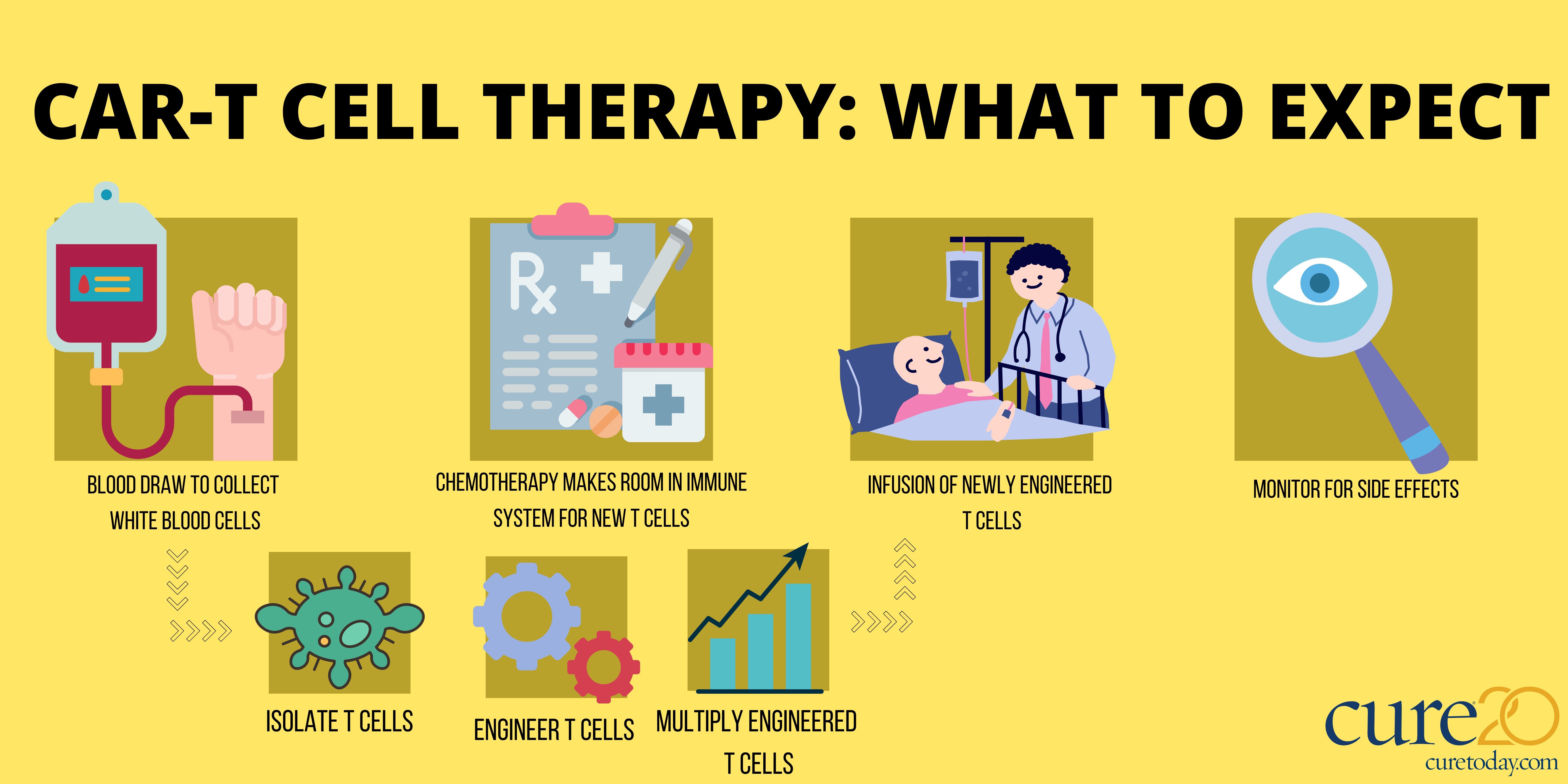Article
Obe-cel Leads to Deep, Durable Responses in B-Cell ALL
Author(s):
Three-fourths of patients with relapsed/refractory B-cell acute lymphoblastic leukemia experienced complete responses — which tended to be durable — when treated with the CAR-T cell therapy, Obe-cel.
About three-fourths (76%) of patients with relapsed/refractory B-cell acute lymphoblastic leukemia (B-ALL) experienced a complete response (disappearance of their disease) or complete response with an incomplete blood count recovery when treated with Obe-cel (obecatagene autoleucel), according to findings from the phase 2 FELIX trial that were presented at the 2023 ASCO Annual Meeting.
Specifically, 54.3% of patients who were infused (94 patients), had a complete response and 21.3% had a complete response with incomplete count recovery. The objective response rate (percentage of patients whose disease shrank or became untraceable) was 76%. Additionally, 97% of patients who responded and had evaluable samples were minimal residual disease (MRD)–negative at the 10-4 level via flow cytometry, meaning that clinicians could not detect traces of cancer after treatment.
“We are dealing with a very difficult patient population here. They are heavily pretreated, they’re older, they’re comorbid, they have got a lot of extra disease on board; there was a lot of extramedullary disease,” lead study author Dr. Claire Roddie, associate professor in haemato-oncology, in the research department of haematology, of University College London Cancer Institute, said in an oral presentation of the data. “But despite all of these odds being stacked against the product, obe-cel was able to achieve (complete response) or (complete response with incomplete count recovery) in 76% of those infused patients, and what’s more is those responses were deep, MRD-negative responses.”
About the FELIX Trial and Patients Enrolled

Obe-cel CAR-T cell therapy that is directed at CD19, a protein that can be found on certain types of blood cancer cells. The drug is designed to mitigate safety concerns and improve persistence, Roddie explained. Previously, obe-cel was evaluated in other settings, including relapsed/refractory pediatric B-ALL,adult B-ALL and other hematologic cancers.
In FELIX, patients were first screened for eligibility, then had their blood extracted — a process called leukapheresis — to isolate and manufacture the T cells. While the CAR-T cells were being manufactuered, patients received bridging therapy. Six days before treatment, pre-conditioning therapy was administered with fludarabine and cyclophosphamide
Regarding baseline characteristics, the median age was 50 years (range, 20-81), and 50% of patients were female. A total 26.6% of patients were Philadelphia chromosome positive. The median line of therapies received was two (range, one through six); 30.9% of patients had at least three prior lines of therapy. Additionally, 53.2% of patients did not experience response to their last prior line of therapy, and 38.3% had underwent allogeneic stem cell transplant. A total 35.1% received prior Blincyto (blinatumomab), 31.9% had prior Besponsa (inotuzumab ozogamicin), and 16% had received both agents.
The median percentage of bone marrow blasts at screening and at time of pre-conditioning was 49.5% (range, 6%-100%) and 41.1% (range, 0%-100%), respectively. Eighteen patients (19.1%) had extramedullary disease (disease located outside of the bone marrow) at the time of pre-conditioning.
Manufacturing of obe-cel was also assessed and was found to be reliable and consistent with the product released for the 94% of patients who underwent leukapheresis. Ninety-six percent of products reached the target dose, the median transduction efficiency rate was 72%, and the median time from vein to release was 21 days.
Further findings showed that 61% of responders were in ongoing remission without starting a new treatment at a median follow-up of 9.5 months. The median duration of response was 14.1 months.
Roddie also unveiled data from a subgroup analysis of responders as part of an independent response review committee assessment. High-risk subgroups, she noted, included those with extramedullary disease and high BM blasts at pre-conditioning.
Side Effects of Obe-cel
Regarding safety, any-grade and grade 3/4 CRS was observed in 75.5% and 3.2% of infused patients, respectively; these rates were 64.9% and 2.7% in those with bone marrow blasts that were up to 20% at preconditioning (37 patients) and 82.5% and 3.5%, respectively, in those whose bone marrow blasts were greater than 20% (57 patients).
Any-grade and grade 3/4 neurotoxicity rates were 25.5% and 7.4%, respectively, in all infused patients. When broken down by bone marrow blasts, these rates were 13.5% and 2.7%, respectively, in those with bone marrow blasts up to 20% and 33.3% and 10.5%, respectively, in those with bone marrow blasts that were greater than 20%.
Roddie noted that 56% and 17% of patients received Actemra (tocilizumab) and steroids, respectively, to manage cytokine-release syndrome, and 3% of patients required vasopressor for cytokine-release syndrome. Eighty-six percent of grade 3 or higher neurotoxicity events were observed in those with more than 75% of BM blasts at pre-conditioning.
Any-grade and grade 3 or higher side effects were reported in 98.9% and 78.7% of patients, respectively. The most common moderate or severe (grade 3 or higher) side effect were comprised of neutropenia (36.2%), thrombocytopenia (25.5%), febrile neutropenia (25.5%) and anemia (19.1%). One death, which was due to hemophagocytic lymphohistiocytosis and neutropenic sepsis, was related to obe-cel by investigator assessment.
“I think we also need to acknowledge the fact this is a safe product to give to those older, comorbid patients,” Roddie said.
For more news on cancer updates, research and education, don’t forget to subscribe to CURE®’s newsletters here.





